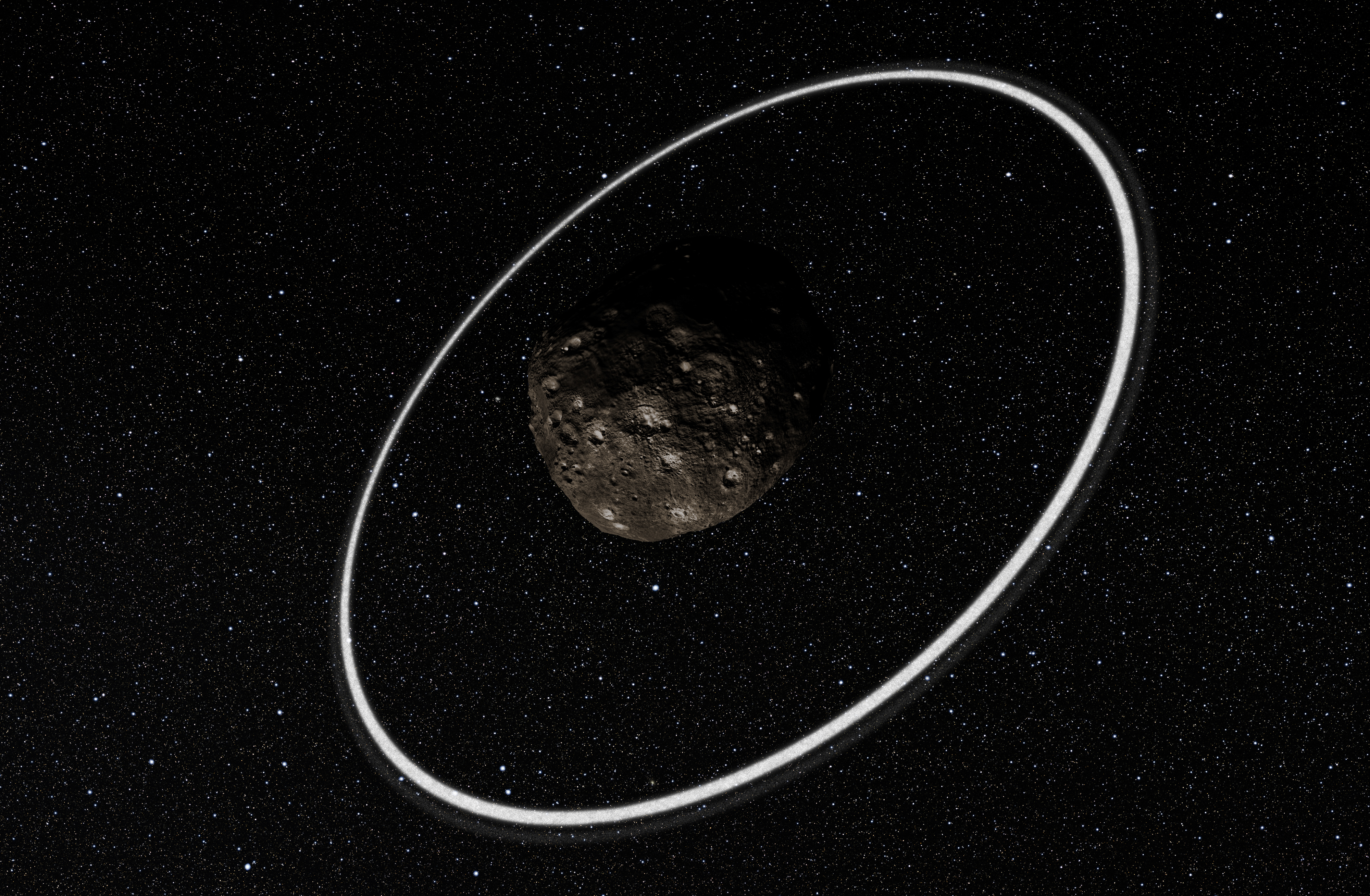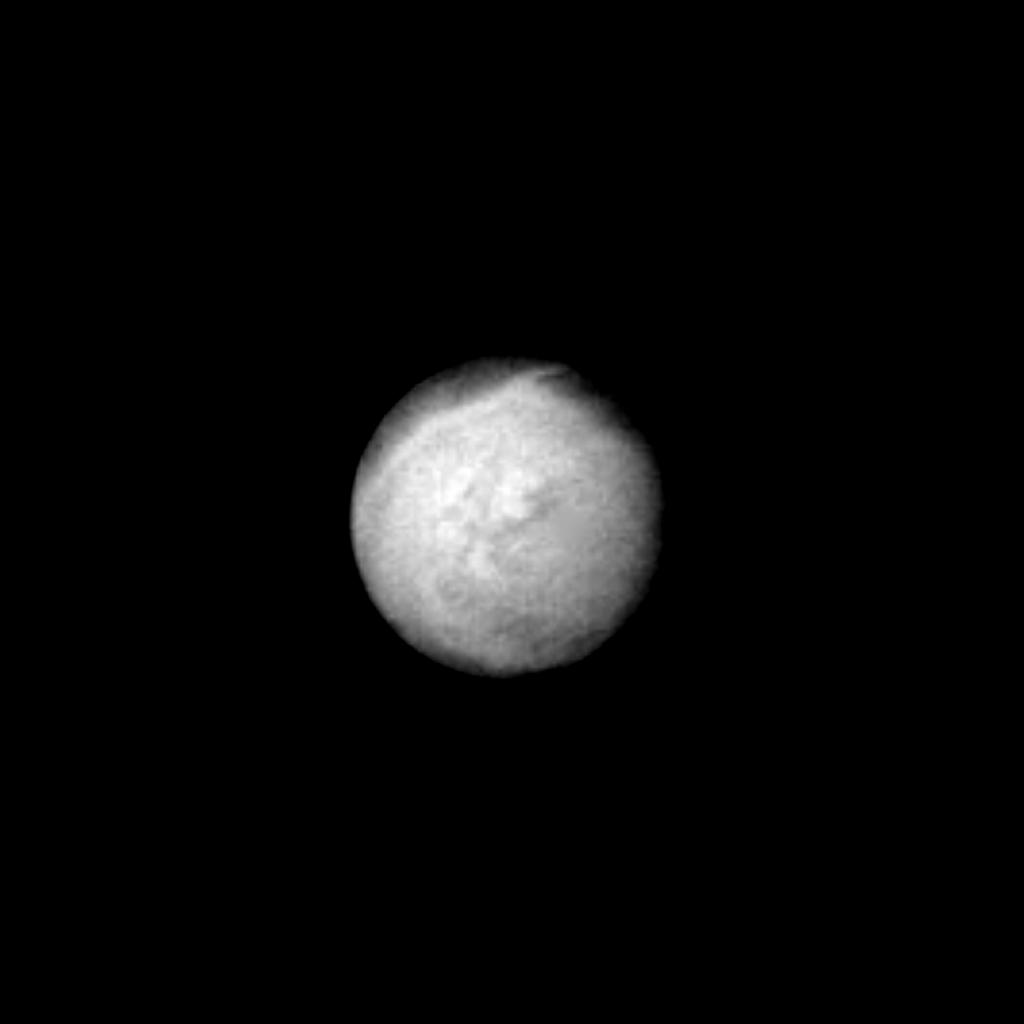20170523 Pre-release Triton Chariklo - Gaia
Three stellar positions released to support unique occultation events |
||||||||||||||||||||||||||||||||||||||||||||||||||||||||||||||||||||||
|
On 22 June and 23 July 2017 relatively brights stars will be occulted by the largest known centaur Chariklo. The object is unique due to the ring system around it. By observing the occultation, a better shape of Chariklo and the detailed structure of the rings can be obtained. Knowing these characteristics improves our understanding of the ring stability and formation. |
||||||||||||||||||||||||||||||||||||||||||||||||||||||||||||||||||||||
 |
||||||||||||||||||||||||||||||||||||||||||||||||||||||||||||||||||||||
|
Figure 1: Artist impression of a close-up of the rings around Chariklo |
||||||||||||||||||||||||||||||||||||||||||||||||||||||||||||||||||||||
|
Even more unique is the occultation of a star on 5 October 2017 by Triton, the largest moon of Neptune. Triton occultations of suitable stars are extremely rare and can be used to study its atmosphere. While Gaia DR1 positions for these stars are very accurate, there are no proper motions available. This leads to large uncertainties in planning for the ground-based occultation observing campaigns. In order to help preparations for these unique events, we make the preliminary astrometric solutions for these stars, prepared for Gaia DR2, public. |
||||||||||||||||||||||||||||||||||||||||||||||||||||||||||||||||||||||
 |
||||||||||||||||||||||||||||||||||||||||||||||||||||||||||||||||||||||
|
Figure 2: Image of Triton, Neptune's largest satellite, taken on 22 August 1989 by Voyager 2 |
||||||||||||||||||||||||||||||||||||||||||||||||||||||||||||||||||||||
|
In the table below Gaia presents the three stellar positions to the astronomy community, taken from preliminary Gaia DR2 data, for epoch 2015.5 in the ICRF reference frame. |
||||||||||||||||||||||||||||||||||||||||||||||||||||||||||||||||||||||
|
||||||||||||||||||||||||||||||||||||||||||||||||||||||||||||||||||||||
| Table: Preliminary data from Gaia DR2 on three stars provided for occultation observations of Chariklo and Triton. (Credit: ESA/Gaia/DPAC, please follow the acknowledgment guidelines as given here and please also cite the Gaia mission paper) | ||||||||||||||||||||||||||||||||||||||||||||||||||||||||||||||||||||||
| Back in 2016 before Gaia's first data release a similar effort was done for the occultation observation of Pluto, a story that can be found here. The Gaia Data Release 2 (Gaia DR2) is planned for April 2018 and will provide the community with accurate positions, proper motions, and parallaxes for more than a billion stars leading to much better predictions for occultation paths on Earth. This will greatly enhance the chances of catching the occultation event during observation campaigns. | ||||||||||||||||||||||||||||||||||||||||||||||||||||||||||||||||||||||
|
[published: 23/05/2017] |
- Removed a total of (62) style text-align:center;
- Removed a total of (8) style text-align:justify;
- Removed a total of (2) border attribute.
- Removed a total of (2) cellpadding attribute.
- Removed a total of (2) cellspacing attribute.








































 Sign in
Sign in
 Science & Technology
Science & Technology